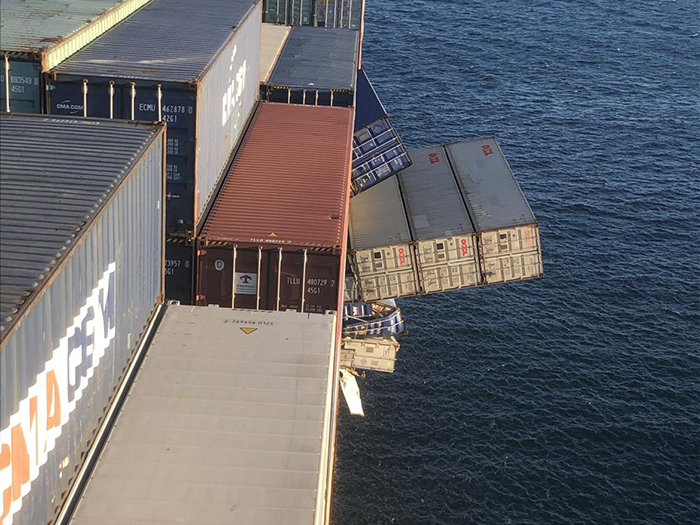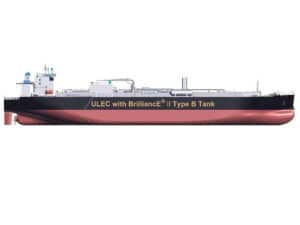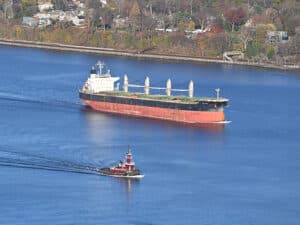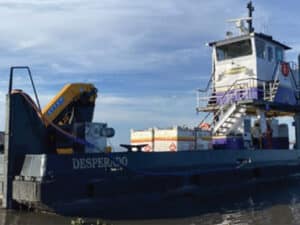
ATSB report on APL England box spill finds container securing fittings were in poor shape
Written by Nick Blenkey
Containers falling from APL England (AMSA photograph)
The Australian Transport Safety Bureau (ATSB) has released its final report into the May 2020 incident in which the containership APL England encountered adverse weather when making way down the east coast of Australia. It underwent a series of heavy rolls that resulted in the loss of 50 containers overboard, and shutdown of the main engine.
The ATSB investigation found the ship’s fixed container securing arrangements on deck were in a poor state of repair and the strength of many securing fixtures had been severely reduced by corrosion.
According to the executive summary of the report, the ATSB found that APL England’s fixed container securing arrangements on deck were in a poor state of repair and the strength of many securing fixtures was severely reduced by corrosion. In the seas encountered, the fittings failed, and containers were lost overboard. The investigation also found that this condition would have taken several years of poor maintenance to develop. This, says ATSB, showed that the ship had not received the scrutiny from crewmembers, shore management or other agencies that a ship of its age or condition required. As a result there was an increased risk to the continued safe operation of the vessel, security of the cargo carried, and safety of crew members working around the containers.
The investigation found that procedures for adverse weather were not followed. Had these procedures and associated assessment tools been used, navigational and operational decisions could have been made, which would have better prepared the ship for the conditions encountered.
CORRECTIVE MEASURES
In addition to the repairs conducted on APL England, the ATSB has been advised that the deck and container fittings in all other vessels in the APL fleet were inspected and repaired as required. The company also implemented improved vessel inspections and associated reporting requirements for both ship and shore staff. APL assessed the safe stowage and carriage of high cube containers and conducted an internal safety assessment of the practice. As a result, limits were placed on the numbers of high cube containers that could be loaded into bays fitted with cell guides, which limited the extent to which containers protruded above the cell guides. Cargo securing manuals were reviewed and updated to include the revised stowage arrangements for high cube containers.
Additionally, APL implemented additional safety action regarding passage planning and navigation in heavy weather and the wider CMA CGM Group and subsidiary entity fleets were made aware of these issues and the safety actions taken in response to this investigation.
In July 2022 the classification society, DNV, updated Class Guideline DNV-CG-0182 to include a new section which provided requirements and guidance on the allowable wear and tear of container supporting structures and container securing equipment.
“This incident should be a reminder to all ship masters and crews of the importance of adhering to the cargo securing manual, and of following specific procedures and guidance material ahead of – and during – adverse weather,” said ATSB Chief Commissioner Angus Mitchell.
- As always, there’s a lot more in the full ATSB report, including an account of how the ship handled the incident when it occurred. Download it HERE




